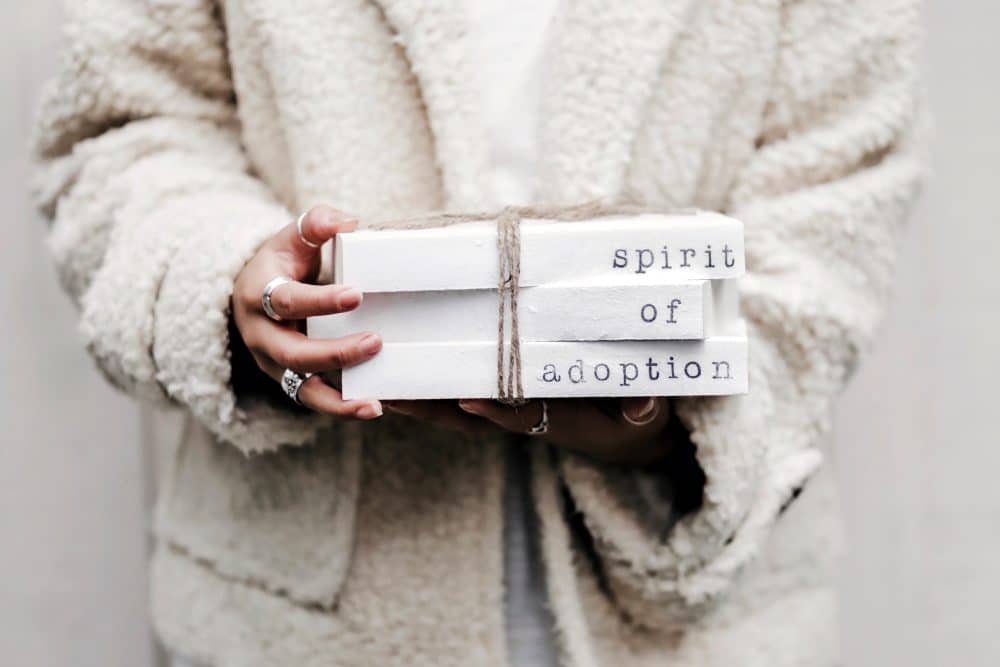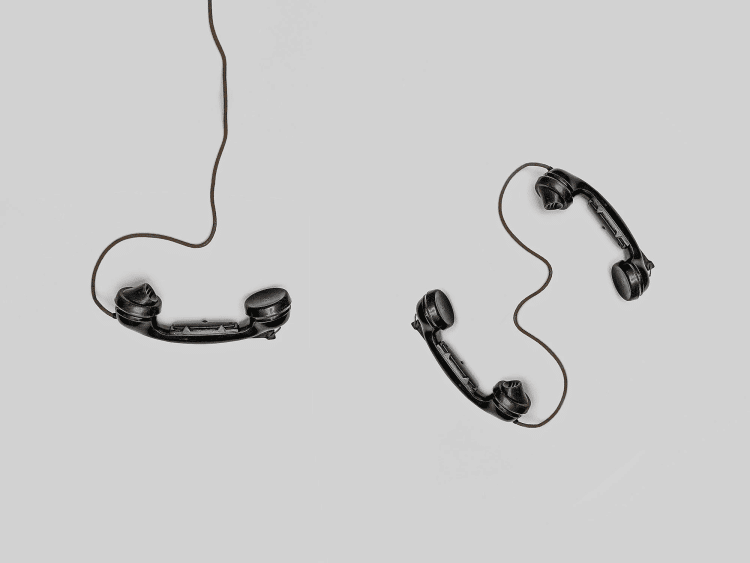Adoption and Attachment: Forming a Secure Bond With Your Adopted Child

Published on November 12, 2022 Updated on May 14, 2023
Adoption gives children a second chance. It provides a child with the opportunities to reach their potential in safe, loving, and secure new families. Adoption is one of the most fulfilling and selfless acts that caregivers can undertake, and there is a multitude of reasons why people choose to do it.
Yet, although adoption is undeniably rewarding, there are still challenges associated with the process. Especially if children experience pre-adoption adversity that could lead to difficulties in establishing a secure bond.
An awareness of the signs of disruptions to the attachment bond in adopted children helps new caregivers understand how to attend to a child’s needs in the way they require. For this reason, researchers have strived to identify the factors affecting the formation of secure attachments in adopted children.
To help facilitate understanding of secure attachments during the adoption process, this article explores:
- When primary emotional attachments form
- The link between attachment theory and adoption
- What attachment disorder, including adoption attachment disorder, is
- Signs of adoption attachment disorder
- The influence of age at adoption on attachment
- Struggles parents who adopt children with attachment disorders often face
- How caregivers can foster secure attachment in their adopted children
- The impact of adoptive caregiver attachment style on their child’s attachment
When Do Primary Emotional Attachments Form?
The first two years after birth are essential for forming healthy early attachment relationships. In this critical window of time, children develop their “template” or “mental representation” of what a caregiver-child relationship looks and feels like.
In fact, at just six weeks of age, children start to prefer their primary and secondary caregiver(s) over others. This preference forms because children begin to develop trust that their caregivers will attend to their needs at this stage of their life. They start to understand that when they cry for food, love, and attention, their caregiver will give it to them. Or, in some instances, won’t.
Therefore, this early window of time is clearly vital for a child’s understanding of whether other people are trustworthy and dependable. And also for the establishment of healthy levels of self-worth and confidence. After all, children’s templates for self-view are grounded in how the people closest to them tend to their needs.

Attachment Theory and Adoption
According to Bowlby’s attachment theory, our early attachment bonds influence how we view close relationships in childhood, adolescence, and adulthood. Therefore, the relationships adopted children experience with their initial, early caregivers could likely influence their ability to relate to their new caregivers.
This pattern is especially evident in adoptive children who experienced healthy, secure relationships with at least one of their initial early caregivers. As a result of this positive fledgling experience, such children may have positive expectations of their new caregivers. Thus, allowing the child to make stable, secure attachments with them.
However, children who experience pre-adoption adversity – where their early caregiver relationships were disruptive or unsafe – may struggle to form secure attachments with their new adoptive family. This is because these childrens’ early experiences taught them that their new caregivers might be unpredictable and unreliable. And in some instances, even frightening.
Fortunately, research shows that children are highly flexible and adaptive at forming new templates for caregiver relationships. Even if they experienced disruption in their early attachment bonds.
So, just as hardship can create templates and expectations of the world and the people in it – so too can positive and constructive experiences. Essentially, consistent, healthy, and loving experiences with new caregivers can help an adoptive child forge optimistic and balanced outlooks.
Pre-adoption Adversity and Attachment
Although there isn’t much research looking into pre-adoption adversity and attachment, the research that does exist focuses mainly on children who were adopted after being in institutionalized settings, such as overseas orphanages.
For example, the outcomes of over 25,000 orphans from Romanian, Russian, Bulgarian, and Ukrainian institutions were studied in the aftermath of their adoption by American families in the 1990s. As these countries experienced particular hardship when the Soviet empire crumbled, prior to their adoption, these children didn’t receive much sensory stimulation, basic resources, and healthy food. Thus, resulting in extreme attachment and developmental difficulties.

The evidence from these studies suggests that pre-adoption adversity is strongly associated with attachment difficulties. This effect was especially evident in children who experienced severe neglect or maltreatment, as they showed the most challenges in forming attachment bonds with their adoptive caregivers.
Examples such as this are extreme. Nevertheless, they do occur. Hence, they often lead to severe difficulties in forming emotional bonds, which have warranted a distinct diagnosis of “attachment disorder.”
Attachment Disorder
The Priory Group defines an attachment disorder as “a series of emotional and behavioral problems that can develop in young children who struggle to form expected bonds to primary caregivers, usually their parents.”
Attachment disorders typically occur in children who don’t receive consistent, attentive caregiving. This could be from:
- Not receiving comfort when they cry as a baby
- Their caregivers not changing them when they are hungry or wet
- Receiving attention only when they act out
- Caregivers inconsistently meeting their needs
- Hospitalization
Attachment disorder can also occur due to separation from caregivers or being moved from one to another, like with adoption or foster care. Attachment disorder in adopted children is called adoption attachment disorder – we’ll discuss this subsequently.
Within their early caregiver relationships, children with attachment disorders may feel:
- Isolated
- Abandoned
- Powerless
- Uncared for
Because of these feelings, a child with an attachment disorder may have the view that they can’t trust or depend on others and that the world is generally unsafe.
The severity of attachment disorder varies, with some children showing mild difficulties and others showing severe challenges. Severe attachment disorder symptoms may indicate reactive attachment disorder (RAD) or disinhibited social engagement disorder (DSED).
RAD is commonly associated with social withdrawal and an inability to respond to and seek comfort. In contrast, DSED involves a lack of inhibition and reserve in unfamiliar or dangerous situations.
Adoption Attachment Disorder
Attachment disruption occurs for all adoptive children as they experience separation from their primary caregivers. Whether their early relationships were secure or insecure, the separation breaks the early attachment bond.
What’s more, for some adoptive children, attachment bonds break multiple times as they move from placement to placement before reaching their permanent adoptive home.
For caregivers welcoming an adopted child into their home, there are some key early signs of adoption attachment issues to look out for:
Early Signs of Adoption Attachment Disorder
Children with adoption attachment disorder may:
- Avert their gaze, avoiding eye contact
- Show a reluctance to smile
- Not seek comfort (e.g., not reaching out to their caregivers to pick them up)
- Comfort themselves through actions like rocking
- Cry inconsolably
- Seem disconnected when you try to connect with or soothe them
- Reject caregiver attempts to play interactive games
- Make fewer sounds than is typical in securely attached children
- Not show emotion when they are left alone
These childrens’ difficulties engaging with and being soothed by their caregivers are protective behaviors learned through childhood. While this can be extremely difficult for an adoptive caregiver to witness, these behaviors once played an important role for the child. They kept them safe from often inconsistent or dangerous early relationships.
Adoption Attachment Disorder in Children
As a child with adoption attachment disorder develops, they may display an aversion to physical affection, seen through frequent flinching, saying “ouch,” or laughing when caregivers attempt to touch them.
Adoption attachment disorder can also manifest as anger problems or control issues in children because we learn how to regulate our emotions through secure early attachments. Which children with insecure early attachments may not have experienced.
Furthermore, children with adoption attachment disorder may also display a lack of inhibition. This may manifest as being extremely talkative with strangers and fearless in dangerous or threatening situations – actions that make such children highly vulnerable.
Behaviors such as these can continue into adulthood. While no formal diagnosis of adoption attachment disorder in adults exists, researchers do acknowledge that attachment difficulties persist. Such issues in adulthood may look like problems reading other peoples’ emotions, displaying low levels of trust, emotional detachment, and issues around boundaries. All of which make maintaining relationships difficult.
It’s natural for caregivers to feel underprepared for these behaviors and not always know what to do. Many adoptive caregivers say that they find it difficult to educate others on their child’s attachment difficulties and that the whole process can feel socially isolating and stressful.
Having said as much, the rewards in such situations ultimately outweigh the challenges. Demonstrating to an adopted child that they are safe, loved, and “good enough” can help break the learned patterns of behaviors that they brought with them into their new life.
Does Age at Adoption Influence Attachment?

In simple terms, yes. Children adopted as babies tend to receive continuous care from their adoptive parents, increasing the likelihood of secure attachment forming. In comparison, older adoptive children tend to have at least one major break in attachment bonds. Moreover, in extreme cases, children adopted at a later stage may have an increased chance of experiencing hardship before reaching their adoptive family. Which would clearly make forming secure attachments more complex.
Evidence also suggests that children often carry their mental representations of relationships into their relationships with their new caregivers. So, if their experiences of relationships were negative up to the time of adoption, they may have a pre-existing insecure attachment.
Furthermore, when children experience insecure early attachments, they may not get the same opportunities to reach developmental milestones as securely attached children do. Thus, older adoptive children may struggle to read social cues and react to situations in “socially appropriate” ways. Thus, creating a blockage to a secure bond with their adoptive caregiver(s).
However, the relationship between attachment and adoption is not simple or direct. Just as how a child’s developmental status can influence the formation of a secure attachment with new caregivers, so too can a secure bond influence a child’s development. Meaning that a child can learn how to regulate their emotions, develop a positive sense of self, and hit developmental milestones once they forge a secure bond with their adoptive caregivers.
For more information on how children regulate their emotions, take a look at our previous article on the topic.
How Can a Caregiver Foster Secure Attachment With their Adopted Child?
Research has shown that caregivers can provide a safe base for their adoptive child by:
- Being consistent with their parenting style
- Providing structure
- Recognizing their child’s strengths and their small “wins”
- Having a positive outlook
- Attuning to their child’s needs
However, it’s important to note that every family dynamic is different. Some children with attachment issues prior to adoption may show significant improvements very quickly, but others may take more time. Patience and empathy are virtues – especially in circumstances such as this.
The following tips may further help adoptive caregivers provide the secure base that their children need:
#1. Know the Child’s History
It’s challenging to meet the needs of an adopted child who has experienced pre-adoption trauma, whether caregivers know their history or not. However, understanding the child’s history can give caregivers a greater understanding of their emotional and developmental level, which can help the child get the support they need.

#2. Let Go of Traditional Parenting Methods
The traditional parenting methods of punishment and reward don’t typically work for traumatized children, as these children may have learned not to respond in these situations.
Instead, a secure attachment can form when caregivers allow their adopted child to talk about their trauma and insecurities when and how they wish to. Listening openly and without overreaction can help a child feel supported and comforted.
Children who have experienced a break in the attachment bond need consistent, predictable support from their adoptive caregivers. Such support may involve establishing a routine and letting the child know about any changes to this schedule in advance when possible. Essentially, the child needs to see that their caregiver is in control and organized.
#3. Set Boundaries
Boundaries help adopted children feel safe, regardless of whether they respond well to them at first. For example, adoptive children with attachment difficulties benefit from caregivers voicing their expectations clearly and allowing for extra time for the children who need it – such as those with developmental delays.
Done successfully, boundaries suggest to a child that their environment is fair, reasonable, and predictable. Therefore, boundaries are an essential tool in the formation of secure attachment.
#4. Join a Support Group
Adoptive caregiver support groups can be an excellent resource for advice from other people who have gone through a similar process. What’s more, they allow people to see that their experiences are normal and surmountable. After all, once caregivers are supported, they feel less isolated and can better provide their child with the safe foundations they need.
Does Adoptive Parent Attachment Style Matter?

The idea that we pass our early attachment representations onto the next generation is a central tenet of attachment theory. Essentially, this concept suggests that we pass on what we learned from our early relationships to our children, and it is backed up by research. However, is this accurate for adoptive children?
According to research, adoptive parents are more likely to have secure attachment styles than non-adoptive parents. Roughly 75% of parents who adopt have an “autonomous state of mind,” meaning they show the traits of a secure attachment style.
So, even though adoptive parents aren’t biologically related to their adopted children, their attachment representations may shape their child’s attachment and potentially support their recovery after early adversity.
If you would like to discover your attachment style, check out the free quiz on our website.
Final Thoughts on Adoption and Attachment
Adoption is rewarding for both the adoptive child and their new family – there are more benefits than can be put into words. Yet, alongside these benefits, there are potential challenges, especially for children who experienced early pre-adoption adversity and those adopted after 12 months of age.
While adoptive parents face many struggles caring for an adopted child with an attachment disorder, their possible secure attachment can provide some safety and stability for the child. Parents can also help to foster secure attachment with their adopted child by knowing their child’s history, swapping traditional parenting methods for trauma-focused approaches, and setting clear boundaries.
Ultimately, the future for adoptive children is incredibly bright when their caregivers provide unwavering love, support, and commitment.
“If you have the heart for adoption, don’t let fear stand in the way.”
Doug Chapman
References
Bowlby, J. (1997). Attachment and Loss: Attachment. Pimlico.
Bowlby J. (1988). Developmental psychiatry comes of age. The American journal of psychiatry, 145(1), 1–10.
Raby, K. L., & Dozier, M. (2019). Attachment across the lifespan: insights from adoptive families. Current Opinion in Psychology, 25, 81–85.
HelpGuide.org. (n.d.). Attachment Disorders in Children: Causes, Symptoms, and Treatment. Retrieved November 8, 2022, from https://www.helpguide.org/articles/parenting-family/attachment-issues-and-reactive-attachment-disorders.htm
Howe, D. (2001). Age at placement, adoption experience and adult adopted people’s contact with their adoptive and birth mothers: An attachment perspective. Attachment & Human Development, 3(2), 222–237.
Morales-Brown, L. (2020, October 30). Attachment disorder in adults: What is it? https://www.medicalnewstoday.com/articles/attachment-disorder-in-adults
Stovall, K. C., & Dozier, M. (2000). The development of attachment in new relationships: single
Vasquez, M., & Stensland, M. (2015). Adopted Children with Reactive Attachment Disorder: A Qualitative Study on Family Processes. Clinical Social Work Journal, 44(3), 319–332.











 Get mental health tips straight to your inbox
Get mental health tips straight to your inbox








